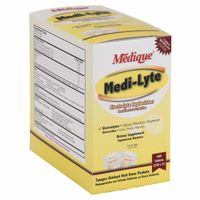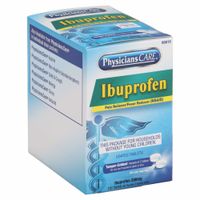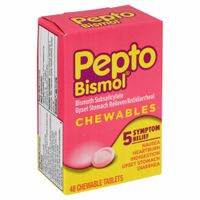Call +(254) 703 030 000 / 751 483 999 / 721 704 777
- Home
- Safety
- First Aid Wound Care
- Oral Inhalant First Aid Medications Treatments
.....Read More
Frequently Asked Questions
What are the best over-the-counter medications for an upset stomach?
For an upset stomach, several over-the-counter (OTC) medications can provide relief, depending on the specific symptoms:
1. **Antacids**: These neutralize stomach acid and are effective for heartburn and indigestion. Common options include Tums (calcium carbonate), Rolaids (calcium carbonate and magnesium hydroxide), and Mylanta (aluminum hydroxide, magnesium hydroxide, and simethicone).
2. **H2 Blockers**: These reduce acid production and are useful for longer-lasting relief from heartburn. Examples include Pepcid (famotidine) and Zantac 360 (famotidine).
3. **Proton Pump Inhibitors (PPIs)**: For frequent heartburn, PPIs like Prilosec OTC (omeprazole) and Nexium 24HR (esomeprazole) can be effective by significantly reducing stomach acid production.
4. **Bismuth Subsalicylate**: Found in Pepto-Bismol, it can relieve nausea, indigestion, and diarrhea. It coats the stomach lining and has mild antibacterial properties.
5. **Simethicone**: For gas-related discomfort, simethicone products like Gas-X can help break up gas bubbles in the stomach and intestines.
6. **Loperamide**: For diarrhea, Imodium (loperamide) can slow down gut movement, reducing the frequency of bowel movements.
7. **Activated Charcoal**: Sometimes used for gas and bloating, though evidence of effectiveness is limited.
8. **Ginger Supplements**: Known for its natural anti-nausea properties, ginger can be taken in various forms, such as capsules or teas.
Always follow the dosage instructions on the packaging and consult a healthcare professional if symptoms persist or worsen.
How do oral pain relievers work to reduce inflammation?
Oral pain relievers, particularly nonsteroidal anti-inflammatory drugs (NSAIDs) like ibuprofen and aspirin, reduce inflammation by inhibiting the activity of cyclooxygenase (COX) enzymes. These enzymes, COX-1 and COX-2, are crucial in the conversion of arachidonic acid to prostaglandins, which are lipid compounds that mediate inflammation, pain, and fever. By blocking COX enzymes, NSAIDs decrease the production of prostaglandins, thereby reducing inflammation and alleviating pain.
COX-1 is involved in maintaining normal physiological functions, such as protecting the stomach lining and regulating blood platelets, while COX-2 is primarily induced during inflammatory responses. Selective COX-2 inhibitors, like celecoxib, specifically target the COX-2 enzyme, aiming to reduce inflammation with fewer gastrointestinal side effects compared to non-selective NSAIDs.
Acetaminophen (paracetamol), another common oral pain reliever, works differently. It is believed to inhibit a variant of the COX enzyme in the brain, reducing pain and fever but not significantly affecting inflammation. This makes it suitable for pain relief without the anti-inflammatory effects of NSAIDs.
These medications are absorbed into the bloodstream through the gastrointestinal tract, where they are distributed throughout the body to exert their effects. The reduction in prostaglandin synthesis leads to decreased inflammation, swelling, and pain, providing symptomatic relief for conditions like arthritis, muscle injuries, and headaches.
However, prolonged use of NSAIDs can lead to side effects such as gastrointestinal irritation, ulcers, and increased risk of cardiovascular events, due to the inhibition of protective prostaglandins. Therefore, they should be used as directed and under medical supervision when necessary.
What are the most effective treatments for sinus congestion and allergies?
The most effective treatments for sinus congestion and allergies include:
1. **Antihistamines**: These medications, such as cetirizine, loratadine, and fexofenadine, help reduce allergy symptoms by blocking histamine, a chemical released during allergic reactions.
2. **Decongestants**: Available as oral medications (pseudoephedrine) or nasal sprays (oxymetazoline), decongestants relieve nasal congestion by shrinking swollen nasal tissues and blood vessels. However, nasal sprays should not be used for more than three consecutive days to avoid rebound congestion.
3. **Nasal Corticosteroids**: Sprays like fluticasone, budesonide, and mometasone reduce inflammation in the nasal passages, providing relief from congestion, sneezing, and runny nose. They are effective for long-term management of allergy symptoms.
4. **Saline Nasal Irrigation**: Rinsing the nasal passages with a saline solution can help clear mucus and allergens, providing relief from congestion and irritation. Devices like neti pots or squeeze bottles are commonly used for this purpose.
5. **Leukotriene Receptor Antagonists**: Medications like montelukast block leukotrienes, chemicals that contribute to allergy symptoms, and are particularly useful for those with both allergies and asthma.
6. **Allergy Immunotherapy**: Allergy shots or sublingual tablets gradually desensitize the immune system to specific allergens, reducing symptoms over time. This is a long-term treatment option for those with severe allergies.
7. **Lifestyle Modifications**: Avoiding known allergens, using air purifiers, and keeping windows closed during high pollen seasons can help reduce exposure and alleviate symptoms.
8. **Hydration and Humidification**: Drinking plenty of fluids and using a humidifier can help thin mucus and keep nasal passages moist, easing congestion.
9. **Over-the-Counter Pain Relievers**: Medications like ibuprofen or acetaminophen can help alleviate sinus pressure and pain associated with congestion.
Consultation with a healthcare provider is recommended to tailor treatment to individual needs and conditions.
How can I safely use inhalers for asthma or respiratory issues?
1. **Consult a Healthcare Provider**: Always use inhalers as prescribed by a healthcare professional. They will determine the appropriate type and dosage based on your condition.
2. **Understand Your Inhaler**: Familiarize yourself with the type of inhaler you have—metered-dose inhaler (MDI), dry powder inhaler (DPI), or soft mist inhaler (SMI)—as each requires a different technique.
3. **Proper Technique**:
- **MDI**: Shake well, exhale fully, place the mouthpiece in your mouth, press the inhaler while inhaling slowly and deeply, hold your breath for 10 seconds, then exhale slowly.
- **DPI**: Load the dose, exhale away from the inhaler, place the mouthpiece in your mouth, inhale quickly and deeply, hold your breath for 10 seconds, then exhale.
- **SMI**: Turn the base, open the cap, exhale fully, place the mouthpiece in your mouth, press the button while inhaling slowly and deeply, hold your breath for 10 seconds, then exhale.
4. **Use a Spacer**: For MDIs, using a spacer can help deliver medication more effectively to the lungs.
5. **Regular Cleaning**: Clean the inhaler and spacer regularly to prevent blockages and infections.
6. **Monitor Usage**: Keep track of doses to ensure you don’t run out of medication unexpectedly.
7. **Recognize Side Effects**: Be aware of potential side effects like tremors, increased heart rate, or oral thrush, and consult your doctor if they occur.
8. **Storage**: Store inhalers at room temperature, away from direct sunlight and moisture.
9. **Emergency Plan**: Have an action plan for asthma attacks, including when to use a rescue inhaler and when to seek medical help.
10. **Regular Check-ups**: Schedule regular follow-ups with your healthcare provider to assess your condition and adjust treatment as necessary.
What should I do if someone faints and needs immediate first aid?
1. **Check Responsiveness**: Gently shake the person and ask loudly if they are okay.
2. **Call for Help**: If there is no response, call emergency services immediately.
3. **Position the Person**: If the person is breathing, lay them on their back. Elevate their legs about 12 inches to improve blood flow to the brain.
4. **Loosen Tight Clothing**: Loosen any tight clothing, belts, or collars to help them breathe more easily.
5. **Check Breathing and Pulse**: Ensure they are breathing and have a pulse. If not, begin CPR.
6. **Keep Them Comfortable**: Maintain a comfortable environment, ensuring they are not too hot or cold.
7. **Monitor**: Stay with the person until help arrives, monitoring their breathing and responsiveness.
8. **Do Not Give Food or Drink**: Avoid giving them anything to eat or drink until they are fully conscious.
9. **Recovery Position**: If they start to regain consciousness, help them into a sitting position slowly. If they remain unconscious but are breathing, place them in the recovery position on their side.
10. **Reassure**: Once they regain consciousness, reassure them and explain what happened.
11. **Seek Medical Advice**: Encourage them to seek medical attention to determine the cause of the fainting.
12. **Avoid Crowding**: Ensure the person has enough space and is not crowded by onlookers.
13. **Note Details**: Observe and note any symptoms or events leading up to the fainting to inform medical personnel.
14. **Stay Calm**: Keep calm to effectively manage the situation and provide reassurance to the person and bystanders.
How do electrolyte replenishers help with dehydration?
Electrolyte replenishers help with dehydration by restoring the balance of essential minerals and fluids in the body. When you are dehydrated, you lose not only water but also vital electrolytes such as sodium, potassium, calcium, and magnesium, which are crucial for various bodily functions. These electrolytes help regulate nerve and muscle function, balance blood acidity and pressure, and rebuild damaged tissues.
Electrolyte replenishers, often found in sports drinks, oral rehydration solutions, or supplements, provide a quick and efficient way to replace lost electrolytes and fluids. Sodium and potassium are particularly important as they help maintain fluid balance and support nerve and muscle activity. Sodium helps the body retain water, while potassium aids in muscle function and prevents cramps.
By replenishing these electrolytes, the body can more effectively absorb and retain water, thus alleviating the symptoms of dehydration such as fatigue, dizziness, and confusion. This is especially important during or after intense physical activity, illness, or exposure to high temperatures, where the risk of dehydration is higher.
In summary, electrolyte replenishers combat dehydration by restoring the essential minerals and fluids needed for optimal body function, ensuring that the body's systems continue to operate efficiently.
What are the signs that I need to take glucose replenishers for low blood sugar?
Signs that you may need to take glucose replenishers for low blood sugar, or hypoglycemia, include:
1. **Shakiness**: Feeling jittery or trembling is a common early sign.
2. **Sweating**: Unexplained perspiration, especially if you're not hot or exerting yourself.
3. **Hunger**: Sudden, intense hunger can indicate low blood sugar.
4. **Dizziness or Lightheadedness**: Feeling faint or unsteady.
5. **Confusion**: Difficulty concentrating or thinking clearly.
6. **Irritability**: Sudden mood changes or feeling unusually irritable.
7. **Palpitations**: Rapid or irregular heartbeat.
8. **Pale Skin**: Looking paler than usual.
9. **Fatigue**: Feeling unusually tired or weak.
10. **Headache**: Sudden onset of a headache.
11. **Blurred Vision**: Difficulty seeing clearly.
12. **Numbness or Tingling**: Especially around the mouth or in the fingers.
13. **Seizures**: In severe cases, low blood sugar can lead to seizures.
14. **Loss of Consciousness**: Fainting or passing out.
If you experience these symptoms, it's important to check your blood sugar levels if possible. If they are low, consuming fast-acting carbohydrates like glucose tablets, fruit juice, or regular soda can help raise your blood sugar quickly. Always consult with a healthcare professional for personalized advice and to determine the appropriate course of action for managing your blood sugar levels.



